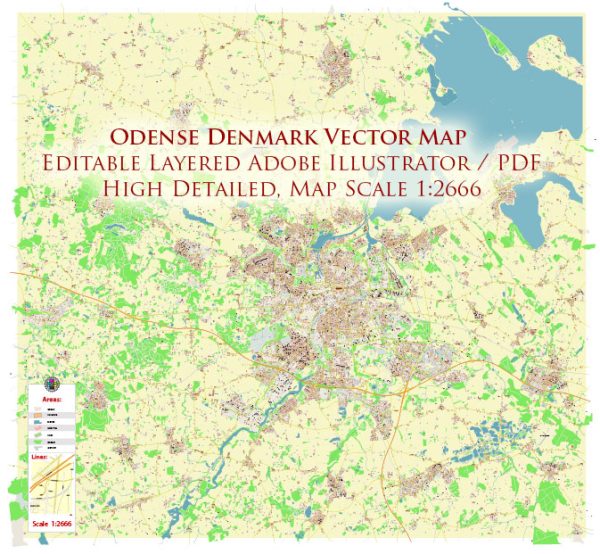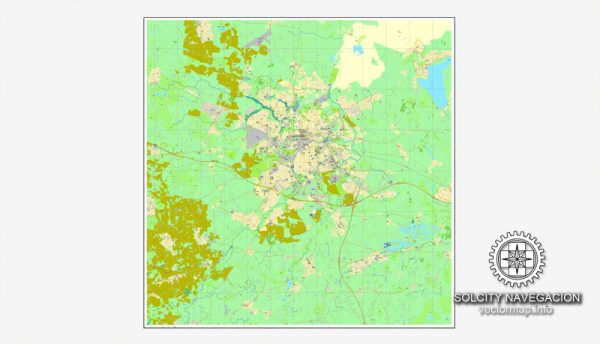Odense, Denmark, is a city known for its rich history and diverse architectural heritage. As the third-largest city in Denmark, it has a blend of traditional and modern architectural styles. Here is a brief description of the architecture you can find in Odense:
- Medieval Architecture: Odense boasts a well-preserved historic city center with charming cobblestone streets, half-timbered houses, and traditional Danish architecture. The oldest part of the city, where Hans Christian Andersen was born, has narrow, winding streets lined with colorful, timber-framed buildings. These structures date back several centuries and provide a glimpse into Denmark’s medieval past.
- Gothic Architecture: Some of Odense’s most notable churches, such as St. Canute’s Cathedral (Sankt Knuds Kirke), are built in the Gothic architectural style. The cathedral features stunning vaulted ceilings, pointed arches, and intricate stonework, showcasing the grandeur of medieval religious architecture.
- Renaissance and Baroque Architecture: Odense also has several buildings that reflect Renaissance and Baroque architectural styles, including Odense Palace (Odense Slot) and a number of townhouses. These structures are characterized by their symmetry, ornate facades, and classical elements.
- Neoclassical Architecture: In the 18th and 19th centuries, Odense saw the emergence of neoclassical architecture, characterized by its clean lines, Greek and Roman-inspired columns, and symmetry. The Odense City Hall is a prime example of neoclassical architecture, featuring a grand facade and a prominent clock tower.
- Modern and Contemporary Architecture: As Odense has developed into a modern city, it has seen the construction of contemporary and innovative architectural designs. The Hans Christian Andersen Museum, designed by Japanese architect Kengo Kuma, is a notable modern addition to the city’s architectural landscape. It features a futuristic, sculptural design that contrasts with the historical surroundings.
- Green Spaces and Parks: Odense is renowned for its well-planned green spaces and parks, offering residents and visitors a chance to enjoy nature within the city. The city’s parks often incorporate modern landscape architecture to create inviting and recreational areas.
- Waterfront Architecture: The city’s location along the Odense Fjord has led to the development of attractive waterfront areas. Here, you can find contemporary apartment buildings, restaurants, and recreational spaces with a focus on integrating modern architecture with the natural surroundings.
Odense’s architectural diversity reflects its historical roots and its evolution into a modern, dynamic city. Whether you’re interested in medieval charm, classical elegance, or cutting-edge design, Odense offers a rich tapestry of architectural styles to explore and appreciate.



 Author: Kirill Shrayber, Ph.D.
Author: Kirill Shrayber, Ph.D.